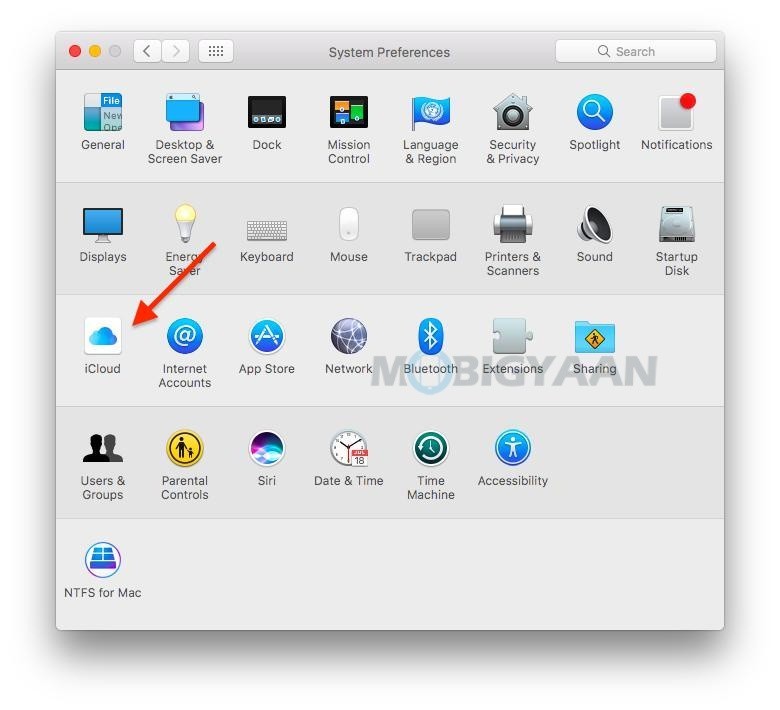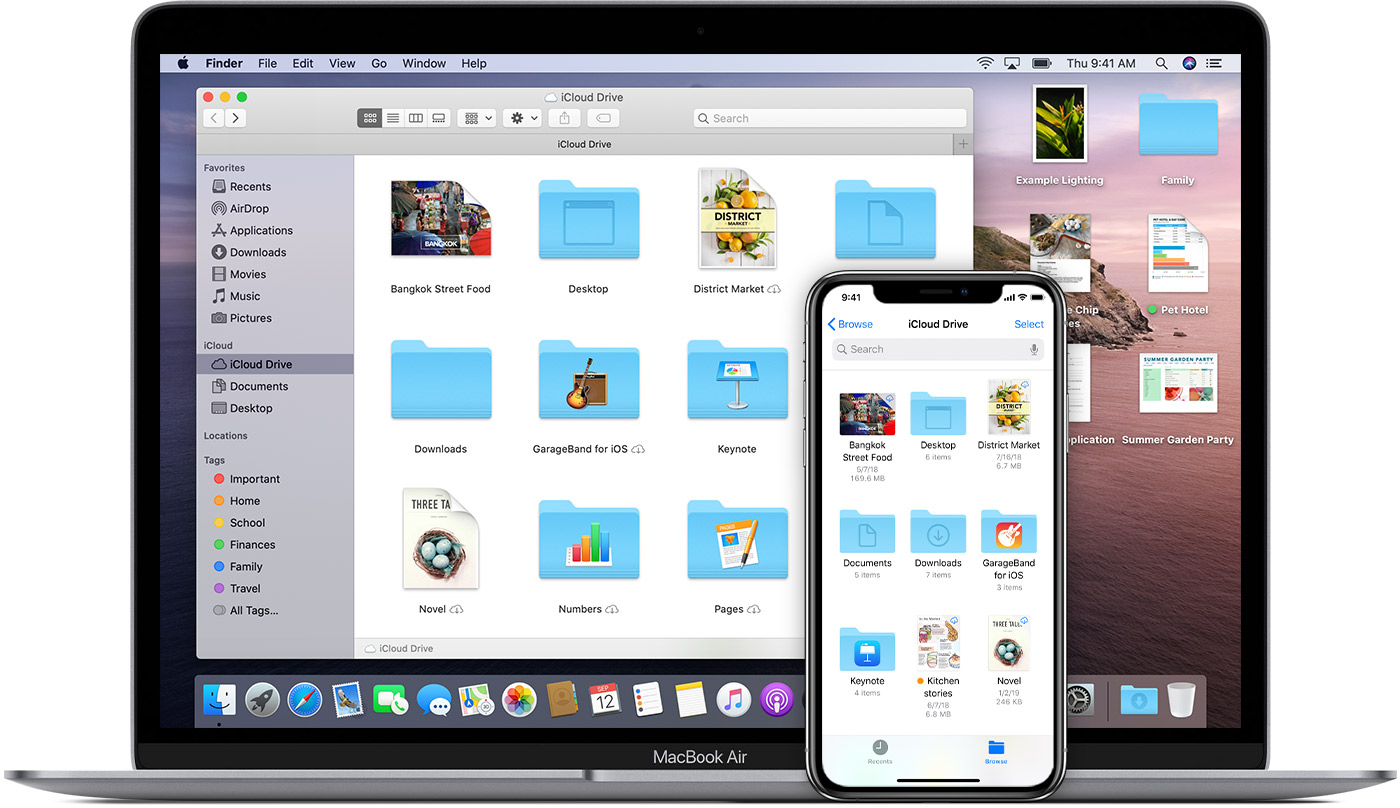Sep 21, 2020 • Filed to: Take Data Backup • Proven solutions
Most of the Mac users believe that their system can’t be infected by malware, which is a common misconception. Just like any other device, Macs can also get corrupted and suffer from an unexpected data loss. Therefore, it is important to know how to backup Mac to iCloud to safeguard your crucial information. To help our readers effortlessly achieve the same, we have come up with this comprehensive guide. Read on and learn different ways to backup Mac to iCloud right away.
Using Store in iCloud, you can choose to have your Mac keep your Documents and Desktop folders on your iCloud Drive. Then, when your Mac gets too full, it will delete the local copies. Your Mac's desktop and Documents folder can be automatically synced to iCloud Drive for easy file sharing among your other computers and iOS devices. Matt Elliott Sept. 19, 2016 3:09 p.m.
- Part 1: Why Do You Need to Backup Your Mac to iCloud??
- Part 2: How to Backup Mac System and Files
- Part 3: How to Backup Your Mac to iCloud
- Part 4: How to Manage iCloud Storage Space
- Part 5: How to Retrieve Lost Data on Mac?
Part 1: Why Do You Need to Backup Your Mac to iCloud??
Before performing a backup operation, lots of users ask about its need. It is a misconception that iOS devices or Macs can’t beaffected by a virus or malware attack. Over the last few years, we have seen the occurrence of various cyber attacks that were essentially targeted for Mac. Appetite, Mac Scareware, Lamadai, and Coin Thief are some of the common threats that can cause some serious damage to your system.
ICloud Drive Desktop and Documents sync has been a game changer in terms of Mac users having the same stuff on all computers. Dropbox is probably more reliable and flexible, but it requires that you have a workflow of saving stuff into your Dropbox folder, and some Mac users just don’t want to do that; they want to put stuff in the Desktop. Select iCloud Drive. If you want to add the files from your Mac Desktop and Documents folder to iCloud Drive, update your Mac to macOS Sierra or later then turn on Desktop and Documents. On your Mac, you can find the files on your Desktop and in your Documents folder in Finder under iCloud.
Therefore, if you wish to prevent your data files from getting infected by malware (or accidental deletion of data), then you need to take a backup of your device. You can either take a backup of Mac on iCloud or any other external hard disk. Since one can access the information from the cloud almost anywhere, it is ideally recommended to backup Mac to iCloud promptly.

Part 2: How to Backup Mac System and Files
While performing the backup operation, you can either take the backup of your entire system or selectively make a copy of your important files.

1. System backup
In a nutshell, the system backup makes an entire clone of Mac’s storage on a secure device. Mostly, Time Machine is used to take the local backup of Mac. Since it is already a part of Mac, no additional tool is needed to perform the system backup. All you need is a mass storage unit that is supported by Time Machine totake a complete backup of the system. Simply open the Time Machine app and turn on the option. You can also select the disk(s) that you wish to backup.
There are also plenty of third-party backup applications that can back up your entire system. For instance, tools like SuperDuper or Carbon Copy can be used to mirror your entire hard drive while taking its backup.

2. Selective file and data backup
If you have limited space, then you can also choose to back up selected files. Even though it is a more time-consuming process, it will help you save your space. At the same time, you would be able to make a copy of all the essential files. Just go to Finder and look for the file you wish to back up. Later, you can just make its copy and save it to any other location/device.
One can either copy the data files manually to an external drive or can simply backup Mac to iCloud. We will learn about the latter in the next section.
Part 3: How to Backup Your Mac to iCloud
If you don’t want to lose your precious data, then you should know how to backup Mac to iCloud. By default, Apple provides free storage of 5 GB on iCloud for every Apple ID. Though, you can always buy added space on the cloud by paying a small amount. One of the best things about taking a backup on iCloud is that it can be accessed from anywhere.
Before proceeding, make sure that you have an updated version of OS X and have enough space on the cloud. You can check it from its official website right here as well. To learn how to backup Mac to iCloud, follow these simple steps.
Step 1To start with, go to the System Preferences on your Mac and launch iCloud.
Step 2If you are using iCloud for the first time, then you would be asked to provide your Apple ID and password to sign in.

Step 3Once it is done, you can simply check the kind of data files you wish to store on iCloud. For instance, you can enable the data on Safari, Mail, Notes, etc. to be uploaded on iCloud.
Step 4You can also visit the Photo settings to turn on the options for iCloud Photo Library, My Photo Stream, and iCloud Photo Sharing. This will let you access your photos on different devices easily.
Step 5Alternatively, there would also be a dedicated iCloud Drive on your Mac. To backup your data files, you can make a copy of your content on the drive or simply drag and drop a file on the drive as well.
Part 4: How to Manage iCloud Storage Space
Most of the users complain about the limited space on iCloud. If you are also suffering from the lack of space, then follow these tips beforehand.
Cancel Icloud Drive Download Mac
1. Manage iCloud space
If you are running low on iCloud storage, then start by knowing how it is being utilized by different data files. Just launch the iCloud app on Mac and click on the 'Manage' button. This will let you devise how to get rid of the data you no longer need.
2. Turn off backup from multiple devices
If you are taking the backup of several devices on the same iCloud account, chances are that it might fall short on space. If it is not needed, then you can simply turn off backup from any other iOS device. Just go to its Settings > iCloud and turn off the feature of iCloud backup.
3. Buy more storage
If nothing else seems to work, simply buy more storage on iCloud. Just launch the iCloud app and click on the 'Manage' button. From here, you can click on the option of 'Buy more storage' and pick a plan of your choice.
- Allows you to take automatic, full, incremental, and differential backups of system, disk, partition, and files.
- Supports system restore, disk restore, dissimilar hardware restore, partition restore, and selective file restore.
- Supports disk clone, partition/volume clone, flexible clone, system clone, and command line clone.
- Supports Windows 10, Windows 8.1/8, Windows 7, Vista, and XP (all editions, 32/64-bit)
Part 5: How to Retrieve Lost Data on Mac?
While it is always recommended to make a timely backup of your Mac to avoid any loss of data, users still end up losing their files unexpectedly. If you have also lost your important data on Mac, then don’t worry. With the help of Recoverit, you can retrieve your lost files without much trouble. It is extremely secure and easy to use application that can recover more than 550 formats of files.
Compatible with every major version of Mac, it has an easy to use interface and can perform an extensive search to retrieve your lost files. It supports different kinds of situations as well. Therefore, it doesn’t matter if you have accidentally deleted your files or if your Mac has been infected by malware, Recoverit will come handy to you on numerous occasions.
Your Safe & Reliable Mac Data Recovery Software
- Recover lost or deleted files, photos, audio, music, emails from any storage device effectively, safely and completely.
- Supports data recovery from recycle bin, hard drive, memory card, flash drive, digital camera, and camcorders.
- Supports to recover data for sudden deletion, formatting, hard drive corruption, virus attack, system crash under different situations.

Now when you know how to backup Mac to iCloud, you can easily keep your data safe. Nevertheless, if you have lost your important data files, then simply take the assistance of Recoverit to get it back. Easy to use and extremely efficient, it will let you retrieve your lost data in no time.
Data Backup
iCloud Drive is a space saver and handy tool to keep storage on your MacBook optimised. It automatically manages space without removing the files and folders, so you can still access them seamlessly without having to download them manually first. While moving Desktop and Document folders is a breeze, other system related folders – like Downloads – are met with an error message.
If you are just moving any folder you created, simply drag and drop, remove the original and create an alias to the new one in the original location. This guide is mostly relevant for system folders that other programs may rely on.
For example, I like to keep my temporary files in the Downloads folder which has the habit of growing to quite a large size. Keeping it on iCloud Drive, which just doubled my storage to 2TB for the same cost makes sense and is a handy way to free up space. Here’s a quick guide on how to move it:
- Simply drag and drop your downloads folder to iCloud drive, which will upload the files in the background so you can get on with things
- Trying to remove the Downloads folder to replace it with an alias (link) to the new location results in an error message, so here’s the workaround:
- Open the Terminal.app (you can use Spotlight search if you don’t have a shortcut in your dock by hitting cmd+space and typing Terminal)
- Drag the Downloads folder from its new location in iCloud Drive to the Terminal window, which automatically changes you into the right directory
- Type in “pwd” to note the path to the Downloads folder in the iCloud Drive, which is not easy to ascertain otherwise
- Open a new Terminal window by pressing cmd+N and type in the following (or copy and paste):
- Enter the password you use to log into your Mac and press OK to remove the old Downloads folder
- Now type in the following command to link the Downloads folder from iCloud Drive to your home folder: sudo
The key thing to note here is that when you copy and paste the location from step 5 (pwd) earlier that you need to add a backslash to the end of Mobile like in my example above. Also, you need to replace <YOUR USERNAME> with whatever the name of your home folder happens to be, which is usually your username. Your path may be totally different, so check it against the output from step 5 (pwd).
Pause Icloud Drive Download Mac
Caveat emptor: Your mileage may vary, let me know on Twitter or by posting a comment.
